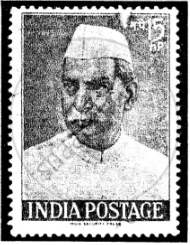Advertisements
Advertisements
प्रश्न
The Preamble states ‘Justice’ and ‘Liberty’ as the basic objects for which the Indian Republic exists. In this context explain the social, economic, and political dimensions of Justice.
उत्तर
The Preamble guarantees justice on different levels. Here, Justice is put in a comprehensive manner. Thus, Justice is closely associated with the following aspects that prevail in a democratic Republic State like that of India. In the context of Social Justice, one thing is made very clear in the Constitution i.e., all the individuals living in the society shall not be discriminated against on the grounds of religion, race, caste, or sex. They are supposed to enjoy the civil amenities in a subservient way. There is no room for Untouchability in our Constitution. The State may make provision for the advancement and upliftment of socially and educationally backward classes of citizens.
For Economic Justice, the Directive Principles promise to bring about a just economic system in the Preamble. Economic Justice means, all the citizens living in the society are liable to be financially sound so as to meet and enjoy their daily needs comfortably. As Justice Krishna Iyyer has rightly said in the context of Economic Justice, he says, “Economic Justice means, whipping out the tear from every eye”.
Justice is confined to various dimensions when it is talked in Political context. Political Justice is related to the right to vote, free and fair elections, and equal access to public offices. The Constitution of India guarantees a minimum number of seats to the Scheduled Castes and Tribes in the Lok Sabha and State Legislative Assemblies. People belonging to various communities, sects or groups are eligible to form their separate union or association to raise their voice against injustice or in favour of their reasonable demands before the government.
संबंधित प्रश्न
Match the following:
| Column A | Column B |
| 1. 1946 | (a) India became independent. |
| 2. 1947 | (b) The Constitution of India was passed. |
| 3. 1949 | (c) The first meeting of the Constituent Assembly was held. |
| 4. 1950 | (d) The Constitution of India was amended. |
| 5. 1976 | (e) India became a sovereign, democratic, Republic. |
This is a picture of the Chairman of the Constituent Assembly of India which drafted the Indian Constitution.

Identify the person in the picture.
This is a picture of the Chairman of the Constituent Assembly of India which drafted the Indian Constitution.

When did the Constitution come into force?
What is ‘Rule of Law’?
In what sense is India a Republic?
What is known as the Preamble? What is the importance of the opening words of the Preamble?
How is the Indian Republic different from that of the USA?
Who represented the Anglo-Indians in the Constituent Assembly?
The Constitution of India stands for a Secular State. What does ‘Secularism’ mean?
With reference to the commencement of the Constitution explains the following:
The clause relating to citizenship was put into effect immediately after the signing of the Constitution.
